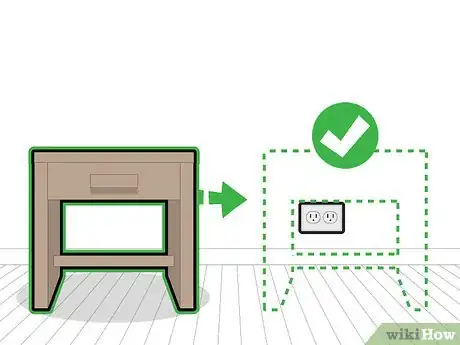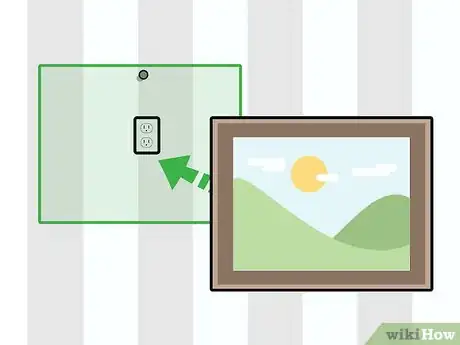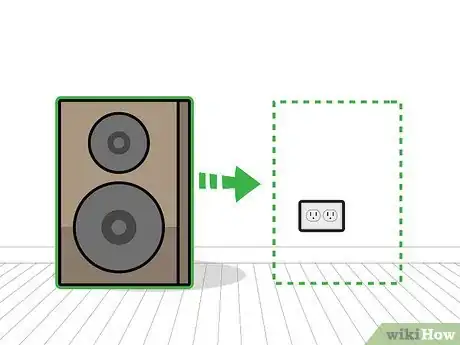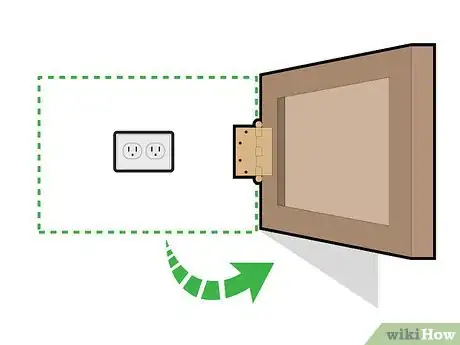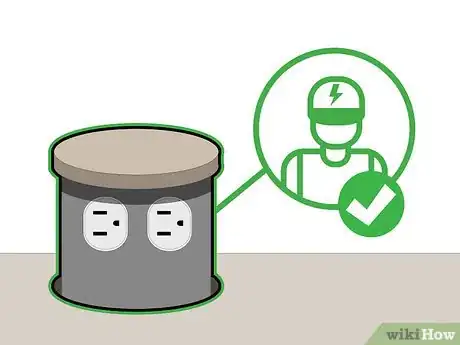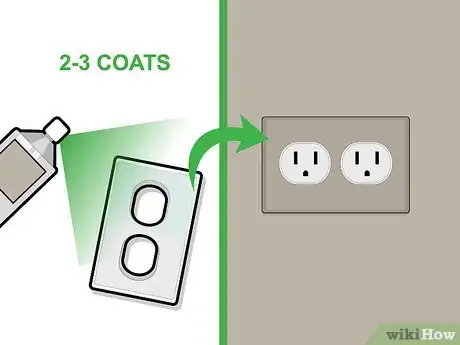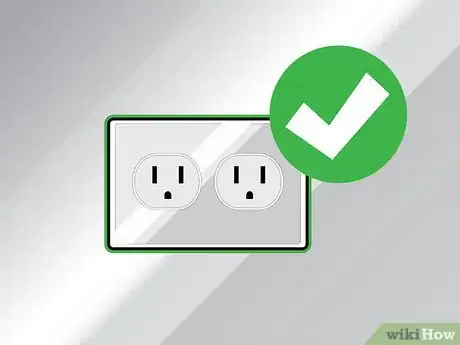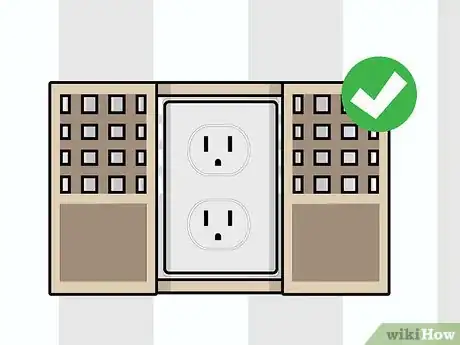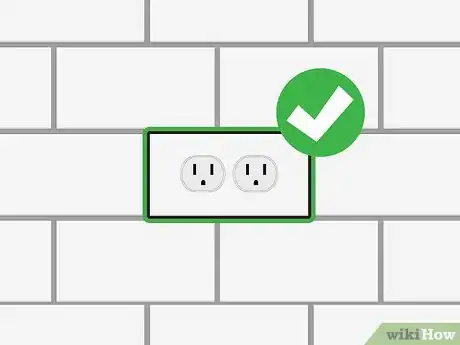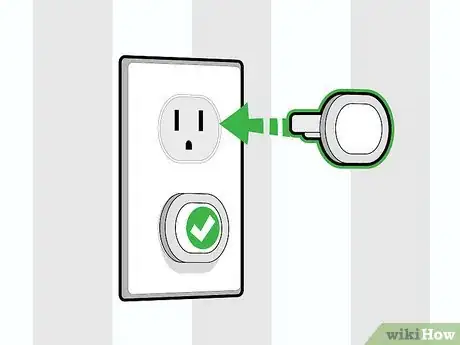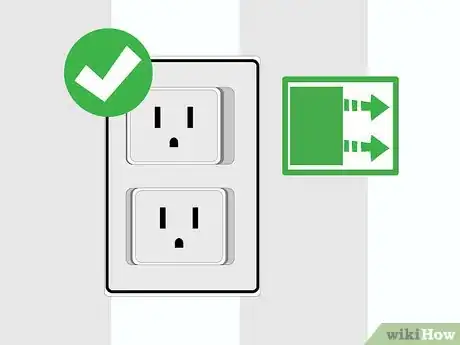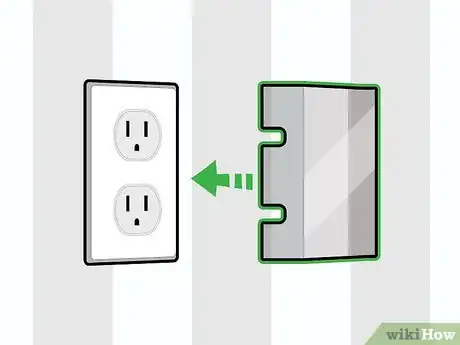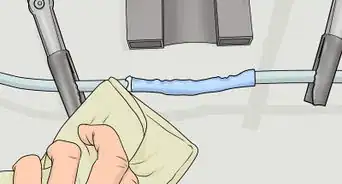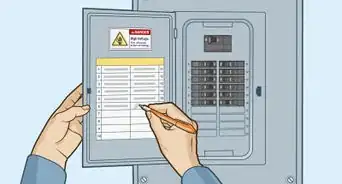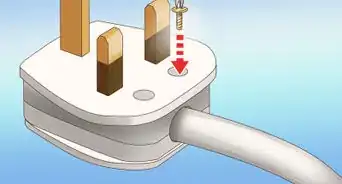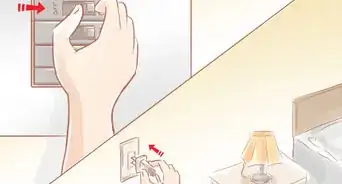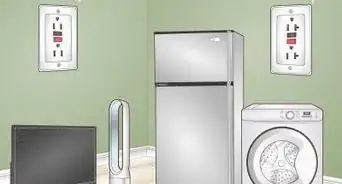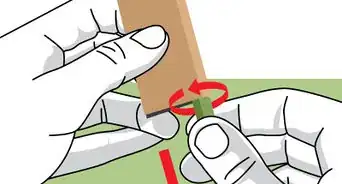This article was co-authored by Jesse Kuhlman. Jesse Kuhlman is a Master Electrician and the Owner of Kuhlman Electrician Services based in Massachusetts. Jesse specializes in all aspects of home/residential wiring, troubleshooting, generator installation, and WiFi thermostats. Jesse is also the author of four eBooks on home wiring including "Residential Electrical Troubleshooting" which covers basic electrical troubleshooting in residential homes.
There are 8 references cited in this article, which can be found at the bottom of the page.
This article has been viewed 51,256 times.
Although essential, electrical outlets can be an eyesore. In homes with pets or young children, they can also be a hazard. Hiding your electrical outlets is the best way to create a seamless decorative style and prevent injuries or electrocution. Depending on your preference, covering, hiding, or safety-proofing electrical outlets are all easy, effective ways to keep them out of sight.
Steps
Covering Outlets
-
1Position furniture in front of the outlet. Cover the outlet with a piece of furniture to hide it from view if you don't plan on use it. If you need to temporarily use the outlet, you can always rearrange the furniture or thread the cord underneath the furniture.[1]
- Choose lightweight furniture so you can easily move it toward and away from the wall.
- Keep the furniture at least several inches or centimeters away from the wall for easier access to the outlet.
-
2Hang a picture over the outlet. For outlets positioned higher on the wall, screw a hook or nail into the wall above it. Hang the picture over the outlet for easy access in case you need to use it while effectively hiding it.[2]
- Avoid taping posters over the outlet, as these can be harder to remove if you need to use it.
Advertisement -
3Place an electrical device over the outlet. If you're using the outlet for a device, position the device directly in front of it. Roll up the cord as much as possible and set it behind the device to keep it from drawing attention to the outlet.[3]
- If you have stereo speakers, for example, position them directly in front of the outlet so they hide it while you're using them.
-
4Install a hollow box to completely cover the outlet. Hollow boxes hide your entire outlet at once, and they usually have a discreet hole in the side for cables in case you need to use it. Use a hollow box if you want to cover the entire outlet while preventing others from touching it.
- If you're hiding an outdoor outlet, you can also buy hollow boxes that look like rocks.
- You can buy hollow boxes from most hardware or home improvement stores.
-
5Place a hinged cover over the outlet. With a hinged cover, you can keep the outlet hidden when you're not using it without compromising its function. Purchase a hinged cover from a hardware store or online and snap it over the outlet panel.
- To further hide the outlet, purchase a decorative hinged cover. Some hinged covers look like small paintings or have an artistic design.[4]
-
6Hire an electrician to install a pop-out or hinged outlet. Pop-out and hinged outlets disguise the outlet with the wall until touched. Contact an electrician to determine which type is best for your wall and replace your old outlet with one that's easier to hide.
- Pop-out outlets, as the name suggests, are hidden in the wall until you press the cover to reveal the outlet. Hinged outlets have a built-in cover that, when touched, pops up and exposes the outlet.
- Pop-out outlets are most common for kitchen islands.
Disguising Outlets
-
1Paint over the electrical outlet to blend it with the wall. Choose a paint color that matches the surrounding wall. Remove the electrical outlet's cover and spray a thin coat over the outlet, waiting for it to dry before placing it back over the outlet.[5]
- Apply 2-3 coats for a strong, blended color.
-
2Purchase a mirrored outlet cover for high-gloss surroundings. If your outlet is over a mirror or glossy tiles, buy a mirrored outlet cover online or from a hardware store. Snap the cover over the outlet panel as a camouflaged alternative to paint.[6]
- If you want to hide an outlet near an oven or stove with a metallic finish, for example, a mirrored outlet cover may be the best option.
- You can also use a mirrored spray paint for a similar effect.
-
3Place a decal around the outlet for an artistic flair. Instead of hiding the outlet with artwork, choose a stylish decal to position around the outlet. The decal can take attention away from the outlet or, if made to disguise outlets, blend it in with decal design.[7]
- You can buy decals meant to blend outlets in with the wall online or from some craft stores.
-
4Buy a "tiled-in" outlet plate for outlets covering tiles. Tiled-in outlet plates are designed to blend in with the surrounding tiles. Choose a plate that matches your tile design and secure it over the outlet panel.[8]
- If your kitchen or bathroom has a slate tile wall, for example, you could buy a dark tiled-in outlet plate to hide your outlet.
Safety-Proofing Electrical Outlets
-
1Place an outlet cap over electrical outlets for a budget-friendly cover. Buy plastic outlet caps online or from a hardware store and plug them into your wall. If you ever need to use the outlet, you can always take them out lately—because of their flat front, however, they are both child and pet-safe.[9]
- Always remember to reinsert caps after taking them out, as they can pose a choking hazard.
- Outlet caps are the cheapest and most common way to cover outlets.
-
2Choose a sliding plate cover for easier access. If you want to safety-proof outlets that you occasionally use, secure a sliding plate over them. Whenever you need to use the outlet, you can move the plate temporarily and slide it back when you're done.[10]
- You can buy sliding plates online or at some hardware stores.
- Sliding plates are less of a choking hazard than outlet caps and ideal for homes with infants or pets.
-
3Use a box cover to fully cover the outlet. Box covers cover the entire outlet panel to prevent children or pets from accidental electrocution. Measure your outlet's length and width, and choose a cover that matches the outlet's dimensions.[11]
- Find box covers at most hardware or home improvement stores.
Expert Q&A
Did you know you can get expert answers for this article?
Unlock expert answers by supporting wikiHow
-
QuestionHow do I safety-proof a bathroom outlet?
 Jesse KuhlmanJesse Kuhlman is a Master Electrician and the Owner of Kuhlman Electrician Services based in Massachusetts. Jesse specializes in all aspects of home/residential wiring, troubleshooting, generator installation, and WiFi thermostats. Jesse is also the author of four eBooks on home wiring including "Residential Electrical Troubleshooting" which covers basic electrical troubleshooting in residential homes.
Jesse KuhlmanJesse Kuhlman is a Master Electrician and the Owner of Kuhlman Electrician Services based in Massachusetts. Jesse specializes in all aspects of home/residential wiring, troubleshooting, generator installation, and WiFi thermostats. Jesse is also the author of four eBooks on home wiring including "Residential Electrical Troubleshooting" which covers basic electrical troubleshooting in residential homes.
Master Electrician
Warnings
- Use a GFCI outlet or GFCI circuit breaker to protect outlets in the bathroom, above the kitchen counter, or within 6 ft (1.8 m) of a sink.[12]⧼thumbs_response⧽
References
- ↑ https://www.momtricks.com/baby-proofing/how-to-baby-proof-outlets-cords/
- ↑ https://www.homedit.com/ingenious-ways-hide-things-plain-sight/
- ↑ https://www.forbes.com/sites/houzz/2016/11/18/how-to-hide-switches-outlets-and-toilet-paper-holders/#605fcbc6635b
- ↑ https://www.apartmenttherapy.com/10-clever-diy-projects-to-hide-household-eyesores-201984
- ↑ https://www.younghouselove.com/two-electrical-projects-only-one-success/
- ↑ https://www.forbes.com/sites/houzz/2016/11/18/how-to-hide-switches-outlets-and-toilet-paper-holders/#605fcbc6635b
- ↑ https://www.oddee.com/item_98506.aspx
- ↑ https://www.forbes.com/sites/houzz/2016/11/18/how-to-hide-switches-outlets-and-toilet-paper-holders/#605fcbc6635b
- ↑ https://parent.guide/how-to-baby-proof-everything-electrical/
- ↑ https://www.momtricks.com/baby-proofing/how-to-baby-proof-outlets-cords/
- ↑ https://www.momtricks.com/baby-proofing/how-to-baby-proof-outlets-cords/
- ↑ Jesse Kuhlman. Master Electrician. Expert Interview. 30 June 2020.
